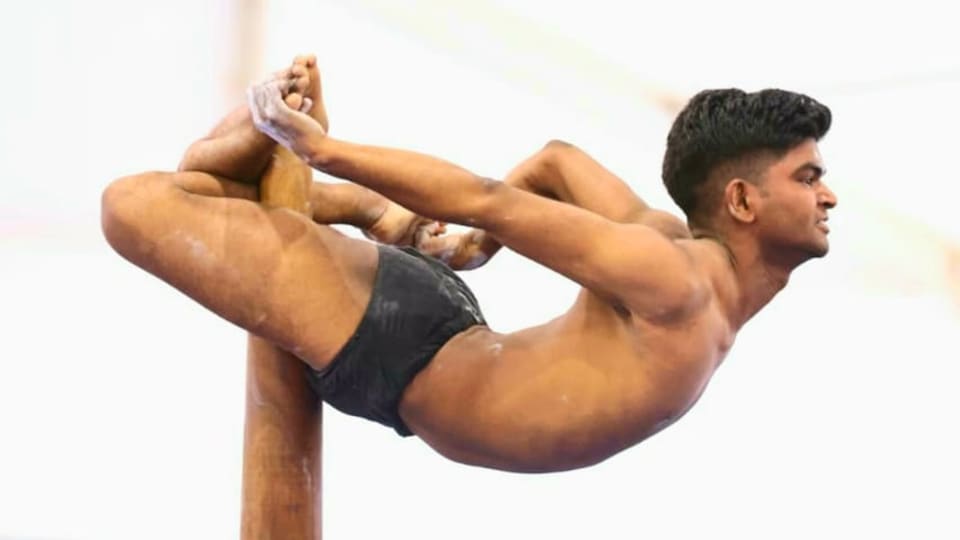Mallakhamb – Know the rules, history and origin of this ancient Indian sport
Started as a form of martial arts training, mallakhamb has evolved into a spectacularly engaging performance sport over the years.

The ancient Indian sport of mallakhamb or mallakhamba (a type of Indian gymnastics on a vertical pole) first gained widespread international attention on the sidelines of the Berlin 1936 Olympics.
Mallakhamb was among the several indigenous Indian sports, including kabaddi, which were demonstrated at Berlin before the Olympics began and drew applause from the locals as well as the international community attending the Games.
Since then, the sport has spread all over the globe and the first-ever mallakhamb world championships were held in 2019, with more than 150 athletes from over 15 countries travelling to Mumbai to participate.
The new-found prominence, however, doesn’t quite fully reflect the rich history of mallakhamb.
What is mallakhamb
At first glance, mallakhamb may come across as a form of aerial yoga or gymnastics performed on a vertical pillar (traditionally a sheesham or Indian rosewood pole polished with castor oil).
However, at its core, mallakhamb is a form of ancient martial arts intended as a training aid for wrestlers and ancient warriors.
‘Malla’ literally means wrestling and ‘khamb’ translates to pole. Together, mallakhamb means wrestling on a pole. Wrestlers and warriors used to use the pole as a training apparatus to perfect martial arts moves which they could later use on opponents in the ring or the battlefield.
History of mallakhamb
Sometimes referred to as the mother of all ancient Indian sports, mallakhamb’s exact origins are almost impossible to trace.
References of some form of mallakhamb can be found in ancient Indian epics like the Ramayana, ancient Chandraketugarh pottery dating back to the second to first century BCE and also accounts of Buddhist Chinese pilgrims to India.
The earliest direct literary mention of mallakhamb appears in an early 12th-century text called Manasollasa, penned by Chalukya king Someshvara III, who ruled in present-day South India at the time.
From the late 1600s to early 1800s, the art-form remained somewhat dormant until Balambhatta Dada Deodhar, the fitness and sports instructor of legendary Maratha king Peshwa Bajirao II revived the art-form as a training method for the Peshwa’s army.
There have been references that historical Maratha empire figures like Lakshmibai, the Rani of Jhansi, Tantia Tope and Nana Saheb practised mallakhamb. The training methodology which honed balance, dexterity and discipline particularly suited Maratha warriors, who were known to be the pioneers of guerrilla warfare.
Mallakhamb’s popularity during the Maratha empire made the Indian state of Maharashtra a hub for the art form.
In fact, mallakhamb and the other Indian sports at Berlin 1936 were demonstrated by members of a little-known physical education institute called Hanuman Vyayam Prasarak Mandal (HVPM) based out of the Amravati city in Maharashtra.
Mallakhamb first made its appearance as a competitive sport on the national level at the national gymnastics championships in 1958 held in Delhi. The first-ever national mallakhamb championships were held at Gwalior, Madhya Pradesh, in 1962.
In 1981, the Mallakhamb Federation of India was founded and the national-level organisation formalised the rules of the sport later in the same year.
A demonstration of mallakhamb was performed at the Festival 2018, preceding the Commonwealth Games 2018 in Gold Coast, Australia. The sport was also due to make an appearance at the opening ceremony of the Tokyo 2020 Olympics but it eventually didn’t materialise due to the COVID-19 situation.
Mallakhamb was included in the Khelo India Youth Games programme from 2022.
Mallakhamb rules
The rules of mallakhamb are fairly simple and close to gymnastics.
Participants need to perform acrobatic feats with a vertical pole or rope as the prop and judges score them according to their mastery over the skills.
Competitors are mainly judged on five different categories – mounting (where performers jump on and run on the pole), acrobatics (where performers execute acrobatic flips, turns and twists on the pole), catches (where performers catch the pole after being airborne), balances (where performers showcase their balance on the pole) and dismounts (where performers jump off gracefully from the top of the pole).
Judges score each competitor during a performance and the one with the highest score is declared the winner.
Types of mallakhamb
Over the years, three types of mallakhamb variations have gained popularity in competitions. They are pole mallakhamb, hanging mallakhamb and rope mallakhamb.
Pole mallakhamb is essentially the traditional form of mallakhamb. Competitors perform on a wooden pole which is 2.6m in height and has a circumference of 55cm at the base. The pole gradually tapers to a circumference of 35cm at the top.
Hanging mallakhamb, meanwhile, uses a shorter pole suspended with hooks or chains as the prop. The bottom of the pole in hanging mallakhamb doesn’t touch the ground.
Rope mallakhamb is performed on a suspended rope which is 5.5m long and 2cm in diameter.
